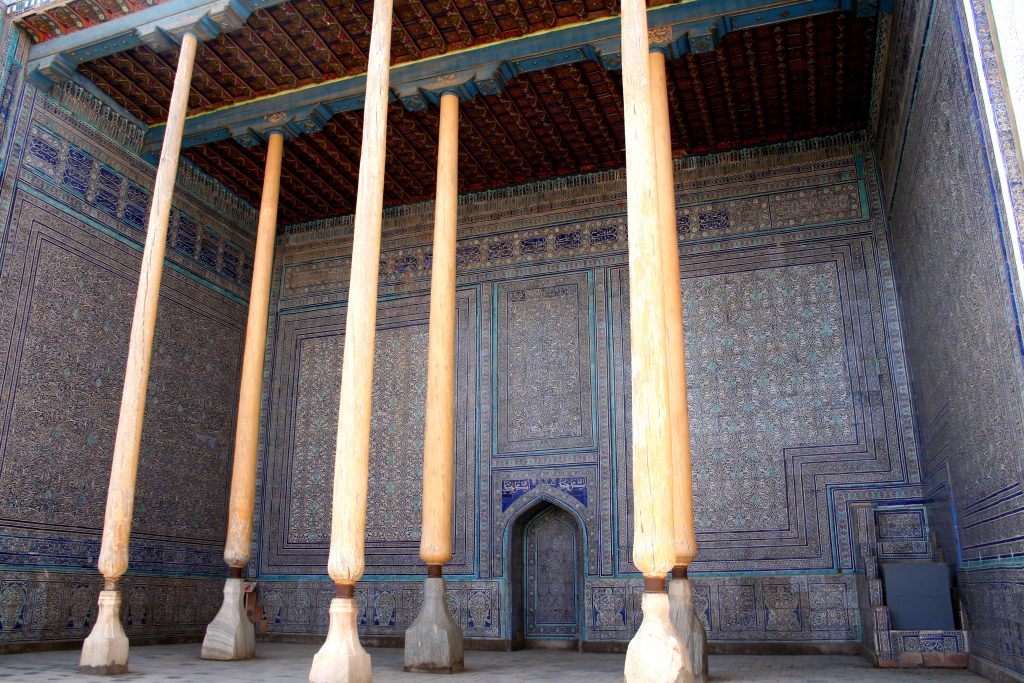The Kunya Ark fortress in Khiva, Uzbekistan
The Kunya Ark fortress in Khiva, Uzbekistan

Along the western walls, there is the fortress of Kunya Ark, built by Khan Arangin in the 1686. The original layout consisted of numerous rooms that provided homes for the Khan family and its court dignitaries.
Today there are few spaces compared to the original ones and date back to the 19th century; they are the Hall of the Throne (kurinishkhana), the Summer Mosque, the mint, the harem and the prisons; visitable as a museum open to the public.
Among the environments that no longer exist today, we remember the arsenal, the external courtyard that served as a waiting room for meetings with the Khan, a staircase that led to the nearby mountain where a watchtower was located.
The Hall of the Throne is an Iwan (an open room on one side with a porch) clad in beautiful majolica tiles decorate with motifs from Islamic art. Elegant carved wooden columns hold the porch from the wooden ceiling which is also refined in geometric patterns in purple and gold that contrast with the turquoise walls. Damaged in the XVIIIth century by the Iranian invasion; it was then restored by Khan Iltuzar. The throne, created in 1816, was made of torn wood and decorated with enamelled silver.
Summer Mosque and the Mint were built simultaneously in the same complex. The Mosque consists of an Iwan covered with elegant majolica tiles, where the turquoise predominates with its floral motifs, while the roof of the porch supported by six wooden columns is painted with blue, golden and purple motifs.

Other places of interest
The visitable harem is not the original one, but it is built under the Khan Mukhammad Rahim II in the second half of the XIXth century in the northern part of the citadel. Walls feature inserts of colored, separate ceramic tiles and simple plastering. Iwan columns are decorated with traditional carvings.
Of the most ancient environments, there is a thermal plant built in 1657 and it reminds for method and engineering the Roman ones. The rooms are semi-underground and a system of underground channels carries hot air into the room destined to the hot bath; besides there is a swimming pool with cold water. The rooms are covered by domes that can be seen from the outside.
The oldest building of the complex remains the Bastion Ak Cheick Bobo, which means the white sheikh, dedicated a Maukhtar Vali, so called by the people. Built in the XIIth century, the bastion was used as an arsenal and watchtower. From its summit it is possible to admire the whole Itchan-Kala.
For more information on what to visit in Khiva, click here.
Photo of Katerina
